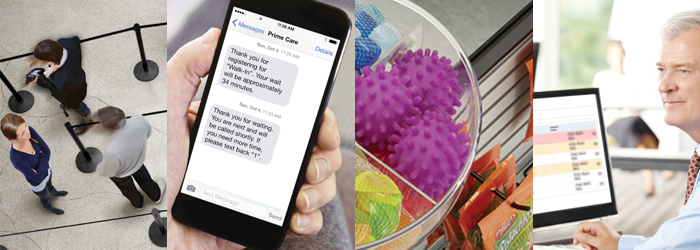
How to Solve the 3 Most Challenging Queuing Problems
Every business or venue has their own unique challenges when it comes to customer flow and queue strategy, but there are three culprits that show up time and time again as the most challenging queuing problems. Here’s how to manage the issues that are plaguing the efficiency of your line and the moods of the people waiting within it.
Challenge #1: Make the line move faster
One of the most challenging areas of queuing involves waiting time – making the wait time shorter, that is. A slow line is a less productive line and this impacts both the satisfaction of your customers and the profitability of your business. There are many ways to solve this problem including the simplest of all: make your line a single-line queue. While it may seem counterproductive to turn a multiple-line queuing system into a single-line queue, this is often one of the first changes one should make to help a line move faster. Average wait times are less in a single-line queue. If you’re already there with a single-line queue, add in electronic queuing to reduce wait times. Electronic queuing systems use technology to increase service efficiency by as much as 35%, using monitors to visually and audibly direct customers to the next available agent.
Challenge #2: Keep people happy
Waiting is no fun. So keeping people happy in a waiting line is another obviously difficult challenge. There are five primary solutions to help diffuse tension and increase satisfaction among waiting customers, while also decreasing perceived wait times:
- Occupy their time. When people are occupied with something they enjoy, time flies by. Apply this principle to your queue and keep your customers occupied. Digital signage that displays helpful how-to videos, interesting promotions, or entertaining media can keep people occupied. In-line merchandising can be another effective distraction, one that’s also lucrative for your business.
- Get them started. The sooner a customer can get their transaction underway, the sooner the waiting is over. There is an end in sight for the person who’s able to unload their cart before they are served, place their order before they find a seat, and so on.
- Reduce anxiety. A sense of injustice can easily gain ground when multiple-line queues move at very different paces. The single-line queue that is run by electronic queuing helps reduce anxiety by providing customers with auditory or visual cues that an agent is available – digital signage takes away the need for a customer to keep an eye out for a faster-moving line.
- Make the wait time known. Telling someone they will be served in “approximately four minutes” may sound like a long time, but the honesty – and, ideally, accuracy – of this information helps relax a customer who is otherwise feeling clueless about what kind of wait they’re in for. Using electronic cues or digital signage to deliver this information helps eliminate anxiety.
- Promote fairness. This tenet also supports the belief in a one-line queue and the first come, first served method. Allowing priority service for VIP customers should be clearly marked in a separate line so that an equitable wait time is still maintained for non-VIP customers. Always put yourself in the place of a waiting customer – would you consider your waiting line strategy a fair one?
Challenge #3: Making a clear clue to queue
If your customers don’t know where the queue is or how the line forms once they do find it, their embarrassment or frustration might lead them straight out the door. The effectiveness of your queue all begins with helping people find their way to it. The versatility of a belted stanchion will give your line clarity and visibility and guide people along the way once they’ve reached the correct queue. In fact, a belted stanchion is the single most notable clue to a queue. Add post-top signage and banners to further enhance the visibility and definition of the queue entrance while also telling your customers where they should stop, wait, or conduct any activities that need to happen before they reach an agent. A simple instruction such as “Line Starts Here” can go a long way toward alleviating tension and helping to relax waiting customers. Are you dealing with these or any other queuing challenges? Contact a Lavi public guidance expert for advice about how to improve your queue strategy.
SUBSCRIBE
Subscribe to stay up-to-date with new products, resources information and news.
RECENT RESOURCES
Theft at the Register: How Strategic Queue Design Protects Profits
ViewRapid Deployment Crowd Control: JetTrac Portable Barriers For The Biggest Spaces
View4 Psychological Reasons Your Customers Hate Waiting In Line
ViewFrom Bleachers To Bookstores: 4 Campus Crowd Control Solutions
View










